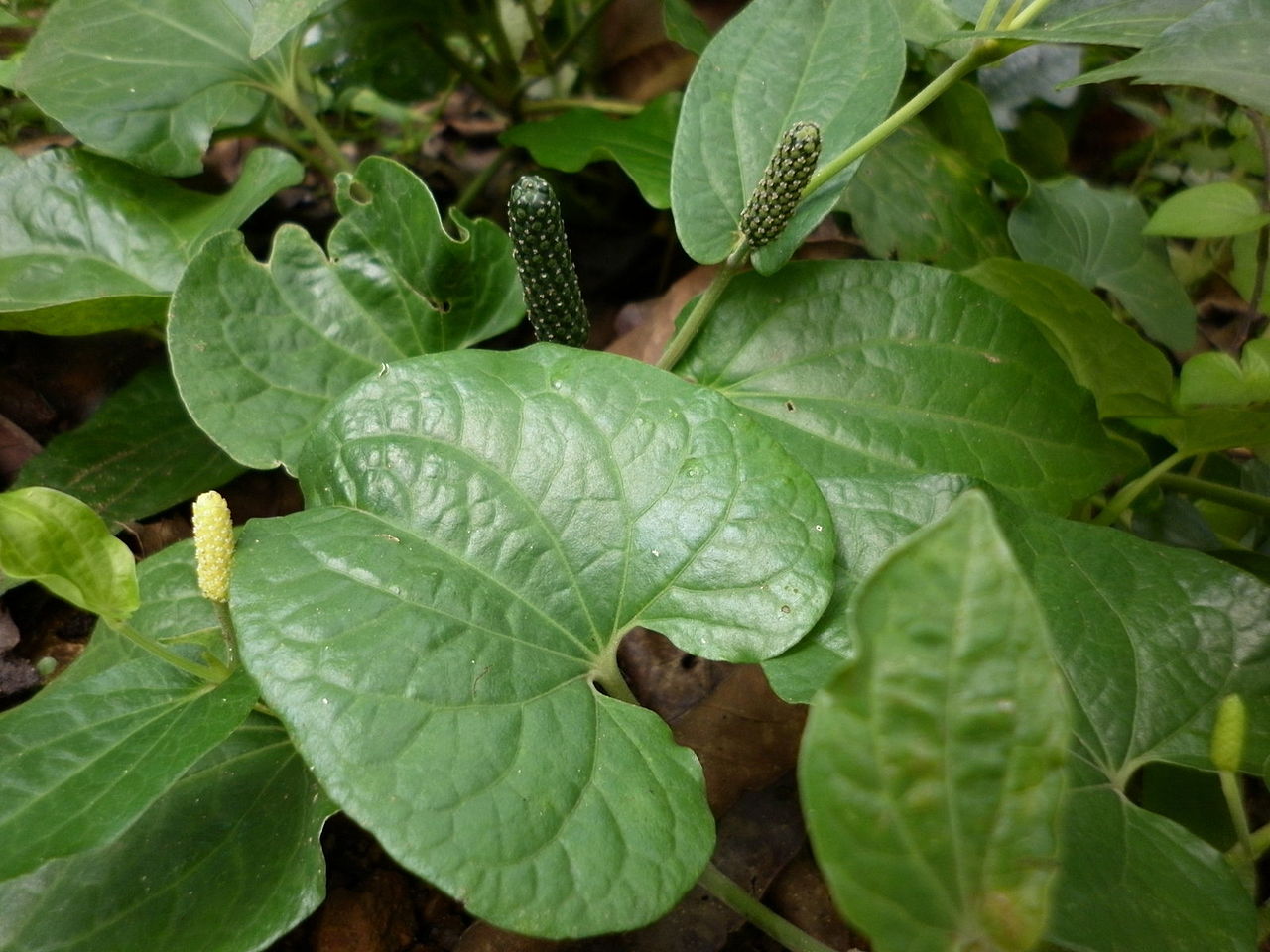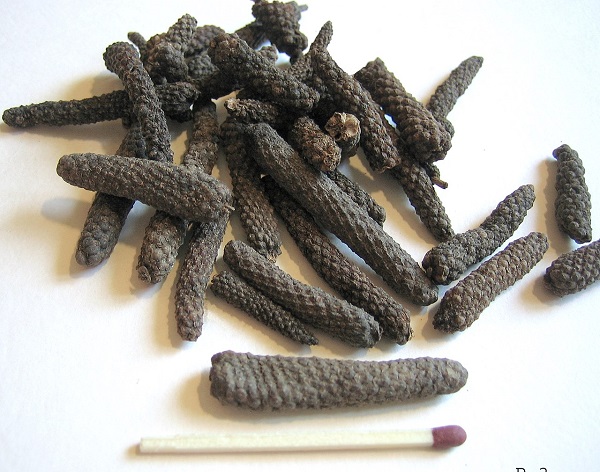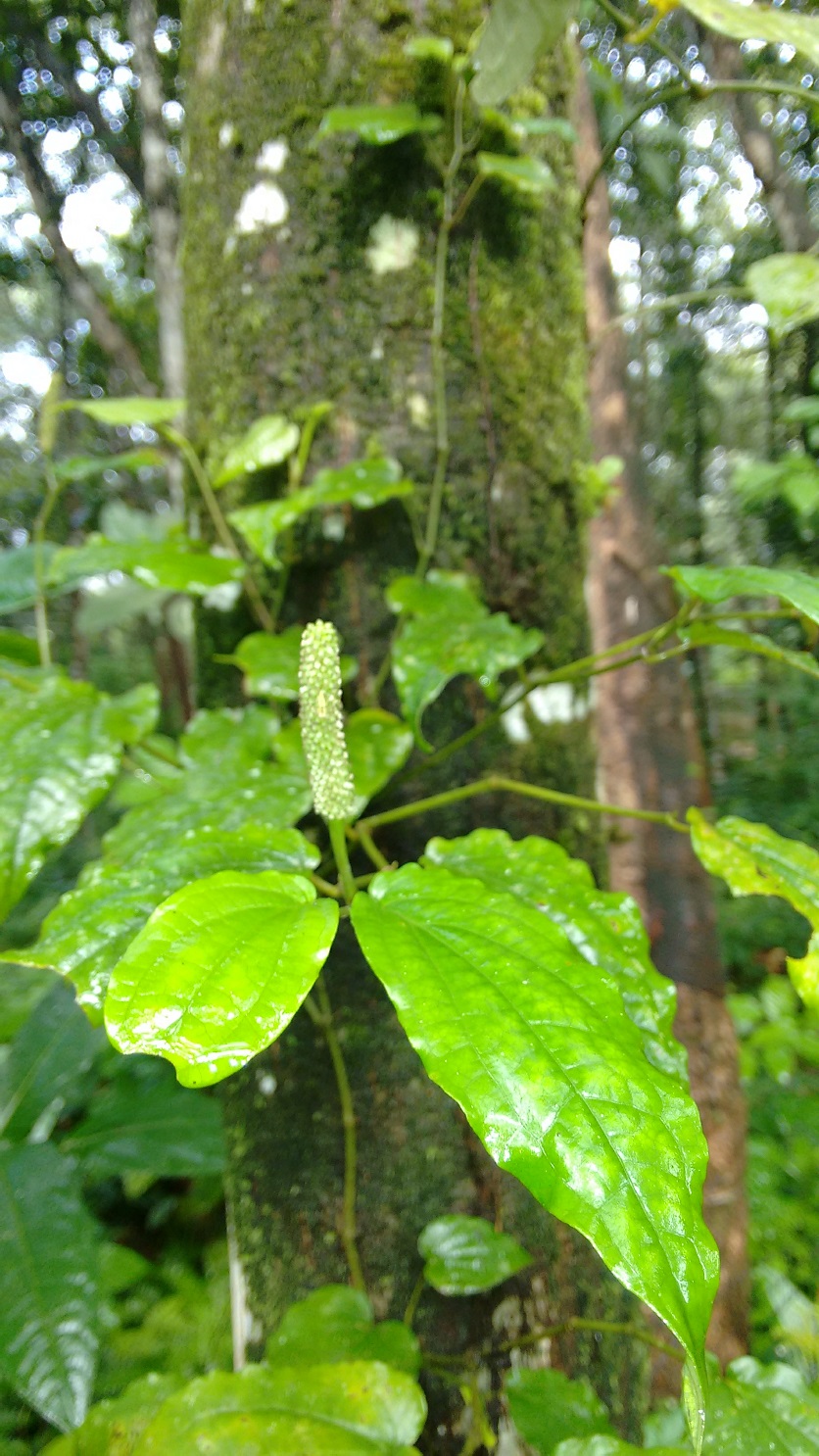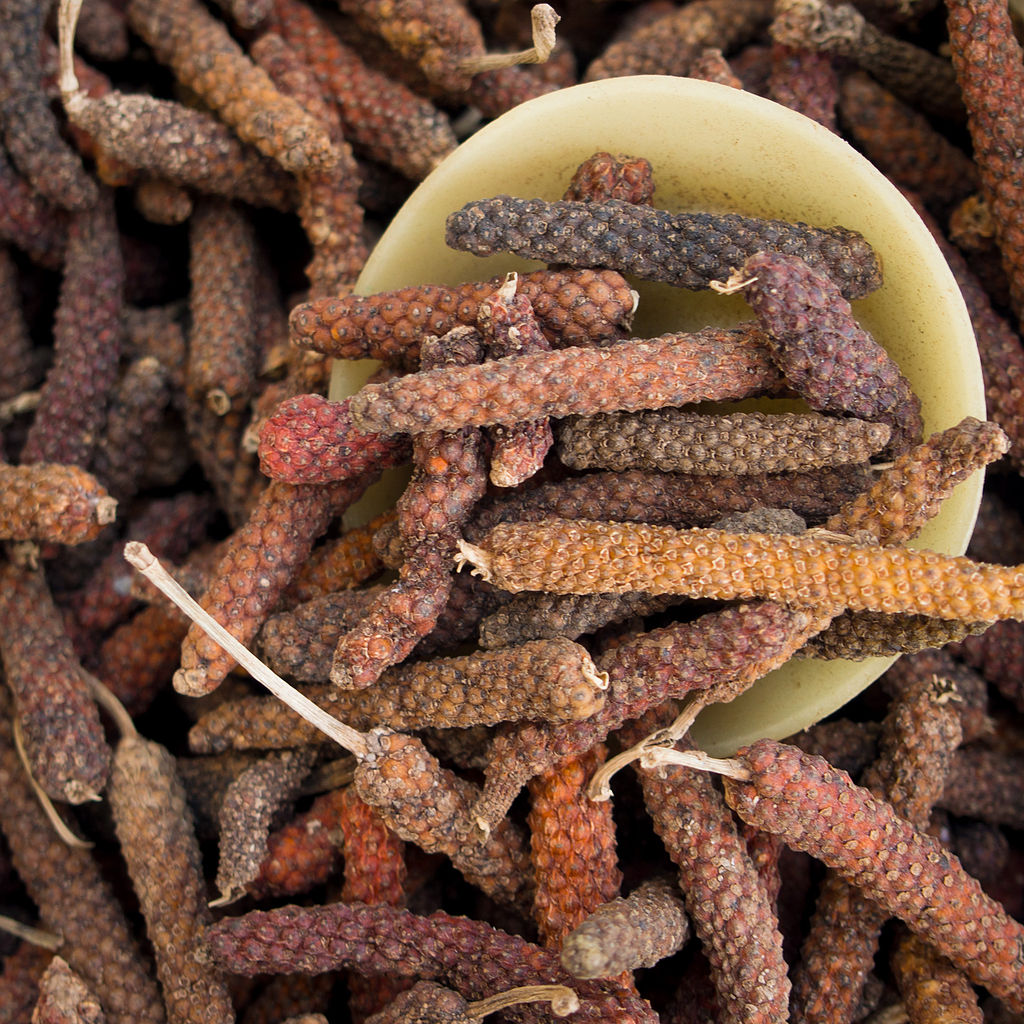Long Pepper: A Forgotten Spice
The North Eastern state of Meghalaya is home to the Indian long pepper or pipli. This spice resembles a dried green chilli and is often mistaken for the spike of the Anthurium flower. It is a whole lot spicier than regular black pepper and is a common ingredient in Ayurvedic medicines. A multi-faceted spice, the Long Pepper is a flowering vine of the family called Piperaceae.
True to its name, this pepper is long and conical in shape. The long pepper is also a close relative of the ever so popular black pepper. The peppercorns on the long pepper are sun-dried and then either used whole or crushed in a spice grinder. When it comes to flavour, though similar to black pepper, the long pepper has a more complex flavour – a sweet, hot and a citrusy bite, all at once. Europe and the West have long abandoned the usage of long pepper. It is practically forgotten in these regions. Though long pepper is still used in Indian cooking, it is valued more for its usage in Ayurveda, Unani, and Sidha–3 traditional Indian medicine systems.
Long pepper vines grow predominantly in the Cherrapunji region of Meghalaya. It is a very slender, perennial and aromatic climber that grows well in the shade of trees. This spice is also cultivated in Assam, West Bengal, Nepal and Uttar Pradesh. The saplings are planted at the beginning of the rainy season and the preferred soil is limestone. The plants have a life span of about 4 to 5 years, after which the yield goes down and the plants are pulled out and a fresh batch is planted. These plants begin yielding about 5 months after planting. In Meghalaya, Piper Longum grows in the wild and is organic. Occasionally cow dung cake is used as a fertilizer. In most cases though, no manure is used. Farmers rely on the natural fertility of the soil, which is provided by the decaying dead leaves in the forest areas. The spikes of Long pepper, which are the flowers of the plant, are harvested in January, while they are still green, pungent, and tender. The spikes are then dried well in the sun till they turn grey. Long pepper grows in the wild on tree trunks. Hence, there is no need to provide any external support for these vines.
Uses
The fruits and roots are the most beneficial part of the Long pepper plant. The roots are much sought after in Ayurveda. The roots and thicker parts of the stem are cut and dried and used as an important drug (Piplamool or Pippali) in the Ayurvedic and Unani systems. The fruits are used as a spice and also in pickles. They have a pungent pepper-like taste. In South India, the root of the Piper Longum plant is used to make a herbal soup called kandathipili rasam. It is said to be beneficial in relieving body pain, arthritic pain, cold and cough. Long pepper is used as snuff in coma and drowsiness and is also effective as a carminative. It is also given as a sedative to those who suffer from insomnia and epilepsy. There is also a very strong belief today that Long pepper could hold the key to fight cancer.
Battle of the Peppers
While long pepper arrived in Europe via regular overland trade routes, black pepper found its way through sea routes. Gradually more and more waterway trade routes opened up resulting in black pepper becoming cheaper and more accessible. To add to long pepper’s woes, chilli pepper from South America started making its appearance. In no time it became a natural substitute for long pepper. It began to be called the “American long pepper.” So, gradually long pepper lost out to various contenders and though it is still well known to India, it is all but forgotten in the West!
 Government of India
Government of India






































 Recognizing the ongoing need to position itself for the digital future, Indian Culture is an initiative by the Ministry of Culture. A platform that hosts data of cultural relevance from various repositories and institutions all over India.
Recognizing the ongoing need to position itself for the digital future, Indian Culture is an initiative by the Ministry of Culture. A platform that hosts data of cultural relevance from various repositories and institutions all over India.